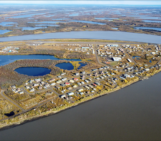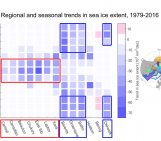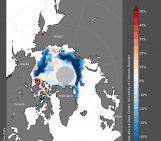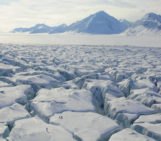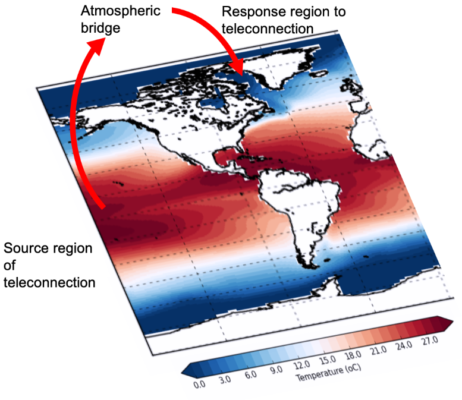
We know that climate change is being felt worldwide, but it is especially prominent in the Arctic, where temperatures are warming twice as fast as anywhere else on the planet. This especially sensitive environment, whose icy, snow-covered land and sea is so important in the global climate system, is really starting to feel the heat. But where is this heat coming from? In this blog post, we will explore how the tropics can play an important role in transporting heat to the Arctic and contributing to Arctic warming.
Arctic amplification
Arctic amplification is a term to describe the amplified warming of the Arctic compared to lower latitudes. In other words, it highlights that the Arctic has been warming twice as fast as the rest of the planet as shown in Fig. 2. Although present all year round, it is largest in autumn and winter months and has been partly attributed to the changes in sea ice (see this previous post on details of sea ice decline) as through the self-reinforcing process called “ice-albedo feedback” (see this previous post). This self-reinforcing mechanism is driven by the reduction of sea ice in summer, leading to more open ocean areas, which absorb more heat due to their dark surface. This heat in turn leads to more ice melting, leading to more open ocean areas, and so on…

Figure 2: Zonally-averaged anomalous surface air tempertures across all latitudes (Y axis) from 1880 up to 2020 (X axis) based on GISTEMPv4 data [Credit: Zack Labe @ZLabe].
What are teleconnections?
Teleconnections act as an atmospheric bridge in the atmosphere, whereby changes in one region, such as e.g. the tropical Pacific, are ‘communicated’ to other regions, e.g. North America, through changes in atmospheric circulation (see Fig. 1). These ‘bridges’ mean that meteorological and climatological phenomena from one location can affect weather and climate in different locations thousands of kilometers away. Therefore, in order to understand some of the drivers of Arctic warming, looking in regions beyond the Arctic for some of the answers is not just a whimsical idea.
The tropical drivers of Arctic warming
A number of studies have shown that these teleconnections from the tropics to the Arctic are initiated through local and steady atypical changes from the mean climate state. The El Nino Southern Oscillation (ENSO), Pacific Decadal Oscillation (PDO) and Madden Julian Oscillation (MJO) are a few such examples of these teleconnection patterns (see Fig. 3 for an example of the abnormal sea surface temperatures during the ENSO and PDO). All of these patterns are related to changes in sea surface temperatures in the Pacific and Indian oceans whereby warmer than average ocean waters generate areas of convection, similar to what would be experienced in thunderstorms. These areas of convection can trigger a wave response in the upper levels of the atmosphere.

Figure 3: Leading principal component of sea surface temperature (SST) variability in the tropical Pacific based on HadISST data. The yellow, orange and red colours show areas of abnormally warm sea surface temperatures and the deep blue and purple colours show areas of abnormally cold sea surface temperatures [Credit: adapted from NCAR Climate Data Guide Pacific Decadal Oscillation (PDO): Definition and Indices, Fig. 1].
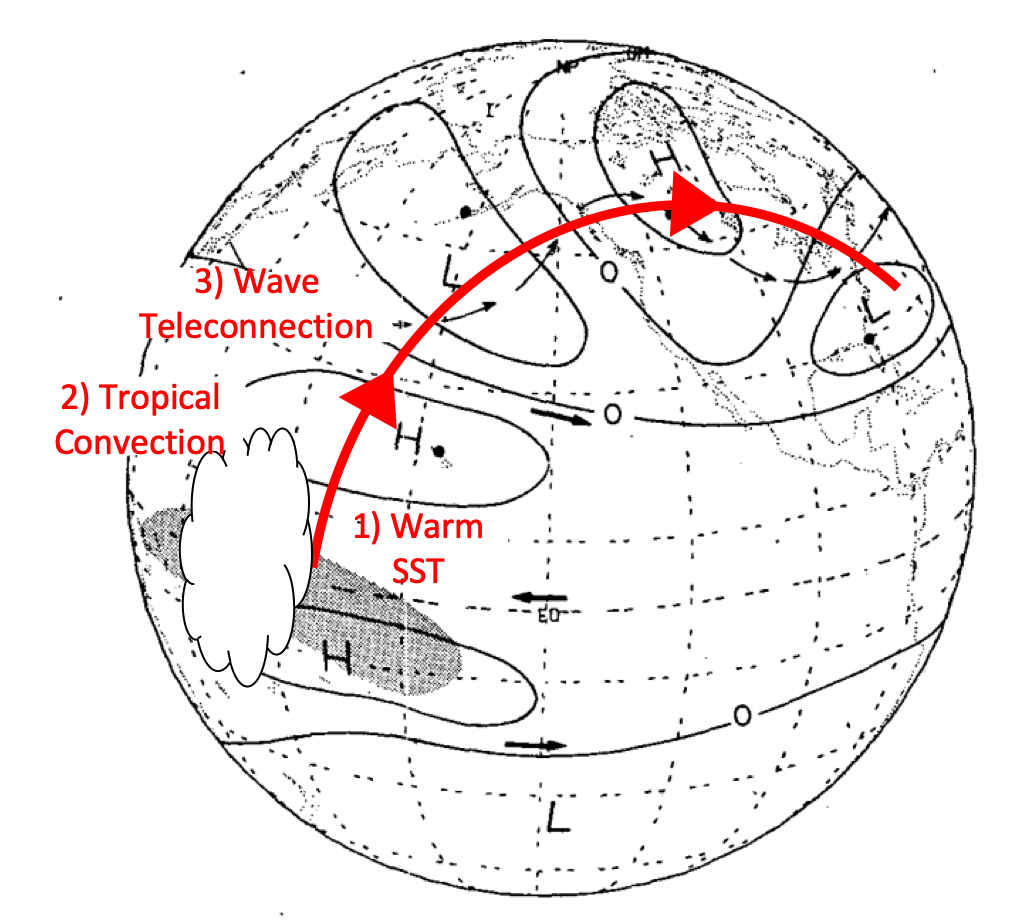
Figure 4: A schematic to illustrate a wave teleconnection from the equator to high latitudes via a wave train of high (H) and low (L) pressure systems due to a region of warmer than average sea surface temperatures that results in tropical convection [Credit: adapted from Horel and Wallace, 1981].
In conclusion
What is most interesting about these processes is that they are more prominent in winter, as this is when teleconnections are strongest. Therefore in the Arctic night, when there is no direct heat from the sun, teleconnection processes are a large component of wintertime warming. This therefore highlights the importance of the tropical regions on the Arctic climate. Even though the tropics are thousands of kilometers away from the Arctic, the generation of unusual sea surface temperature patterns there are so large that they trigger large waves that take heat and moisture towards the Arctic, especially in winter resulting in a warmer (and sometimes wetter) Arctic. So its seems not all remote parts of the planet are so remote after all…
Further reading
- NASA Earth Observatory – Arctic Amplification
- National Weather Service – Teleconnections
- National Geographic – Ocean temperatures are warming up.
- Ding, Q., Wallace, J.M., Battisti, D.S., Steig, E.J., Gallant, A.J.E., Kim, H-J., Geng, L. (2014): Tropical forcing of the recent rapid Arctic warming in northeastern Canada and Greenland. Nature, 509(7499), pp.209–12, doi: 10.1038/nature13260.
- Trenberth, K.E., Branstator, G.W., Karoly, D., Kumar, A., Lau, N-C., Ropelewski, C. (1998): Progress during TOGA in understanding and modeling global teleconnections associated with tropical sea surface temperatures. Journal of Geophysical Research, 103(C7), p.14291, doi: 10.1029/97JC01444.
- Climate Change & Cryosphere – Why is the Arctic sea-ice cover retreating?
- Image of the Week – The warming effect of the decline of Arctic Sea Ice
- Image of the Week – Climate feedbacks demystified in polar regions
- Image of the Week – Heat waves during Polar Night!
Edited by David Docquier and Clara Burgard
 Michelle McCrystall is a Post-doc at the University of Manitoba in Winnipeg, Canada. Her research focuses on investigating the tropical drivers of Arctic climate through climate models and reanalysis data, with her current research focus specifically on changes of precipitation in the Arctic. Twitter:@Michelle_McCrys. Contact Email: michelle.mccrystall@umanitoba.ca.
Michelle McCrystall is a Post-doc at the University of Manitoba in Winnipeg, Canada. Her research focuses on investigating the tropical drivers of Arctic climate through climate models and reanalysis data, with her current research focus specifically on changes of precipitation in the Arctic. Twitter:@Michelle_McCrys. Contact Email: michelle.mccrystall@umanitoba.ca.

